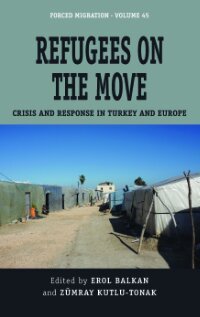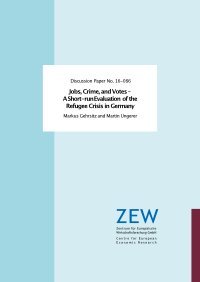By Lucy Hovil, Sasha Jesperson and Jennifer Vallentine, with assistance from Julia Litzkow, Maël Galisson and Hugo Eduardo Jovel Majano
Against the backdrop of increasingly restrictive policies, this study explores recent irregular migration dynamics to the European Union (EU) and the United Kingdom(UK). The study combined desk research with 43 key informant interviews and 52 in-depth interviews with migrants in Europe who had travelled between mid-2023 and the time of the interview in 2024. It focuses on three key routes into the EU, including the Central Mediterranean route (CMR), the two major routes into Spain – the Western Mediterranean route (WMR) and the Northwest African (Atlantic route) – as well as the English Channel crossing into the United Kingdom1, to understand how migration and smuggling dynamics have shifted since 2023, as well as the impact of these shifts on people on the move. It also considers the trends and changes that may continue to emerge in the face of increasing migration restrictions in Europe. Key findings Despite a downturn in arrivals between 2023 to 2024, the demand for irregular migration remains strong Overall, the numbers of arrivals into Europe in 2024 was lower than in 2023. However, the drivers of migration remain strong, and the hostile environment toward migrants in transit countries also continues to rise. As a result, demand for irregular migration continues, as do movements across the Mediterranean and Atlantic into the EU, and across the channel into the UK. The recent decline in numbers is likely indicative of a short-term fluctuation, rather than the beginning of the end of irregular sea movements to the EU. The push to attempt the Mediterranean or Atlantic crossing to the EU is likely to remain constant – if not grow. There have been considerable fluctuations across the major routes into the European Union; as one route declines, others surge or re-emerge An overall decrease in numbers between 2023 and 2024 was aided by decreased movements along the Western Mediterranean and Central Mediterranean Routes. However, simultaneously there were upticks in movements along the Atlantic route, English Channel crossing and Eastern Mediterranean route2. Figures towards the end of 2024 on the CMR also suggest an upwards trend that may continue into 2025. While politicians have claimed that the various agreements and policies implemented in 2023 and 2024 appear to have successfully reduced arrivals, along the CMR in particular, it still remains the most frequented irregular sea route into mainland Europe. Further, other routes, for example the Atlantic route, have (re)emerged. Historically the CMR has seen fluctuations indicating it could easily increase once more, exactly as it did from 2021 onwards after the previous big decrease post-2017. Smuggling operations continue to adapt (and thrive) in the face of policy changes Smuggling networks are agile and adaptable, deploying new strategies to circumvent counter-smuggling initiatives. Instead of extinguishing supply, stricter policies, particularly on the CMR, English Channel and Atlantic routes, have resulted in increasingly adaptive and professionalised smuggler operations. While the WMR has been the least prominent route between 2023 and 2024, smuggling networks have not disappeared. Instead, they have diversified their operations, with evidence of involvement in other criminal activity, to ensure a continued income stream. This suggests that smuggler networks could easily be ready to return to, or expand migrant smuggling if demand returns. Hardline policies have not prevented irregular migration and only heightened risks for migrants Policy approaches across Europe continue to be led by political pressure to be seen as ‘tough on migration’, leading to prioritising the control of movement and anti-smuggling measures over the creation of legal pathways and the protection of those moving. From the perspective of migrants, there is little evidence to suggest that deterrence policies do, indeed, deter people from seeking to move to Europe irregularly. As demand for irregular migration remains, migrants are likely to be more reliant on smugglers, as a way to bypass restrictions. The impact of restrictive policies on migrants is that sea crossings are taking longer, migrants are taking more circuitous journeys to avoid detection, and larger numbers are being crammed into boats lacking adequate safety equipment by unscrupulous smugglers. In addition to the risks at sea, migrants face increasingly hostile conditions when stuck in key transit countries, as those countries receive continued pressure from the EU to curb movements.
Denmark: Mixed Migration Centre (2025) 36p.















